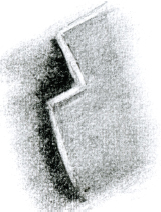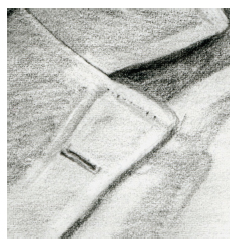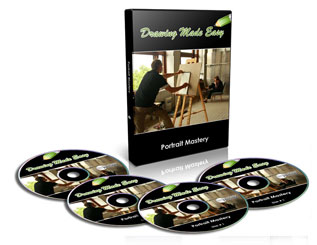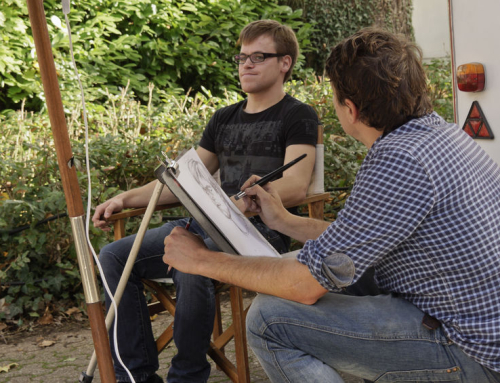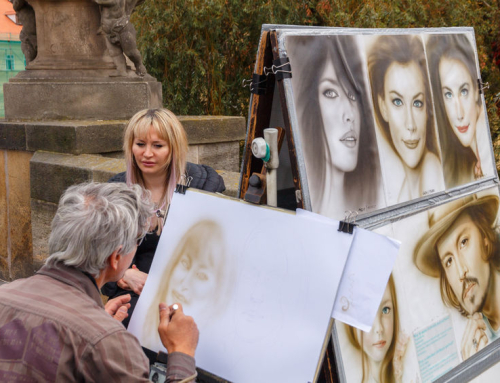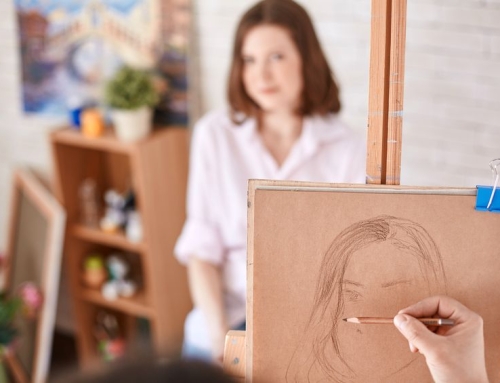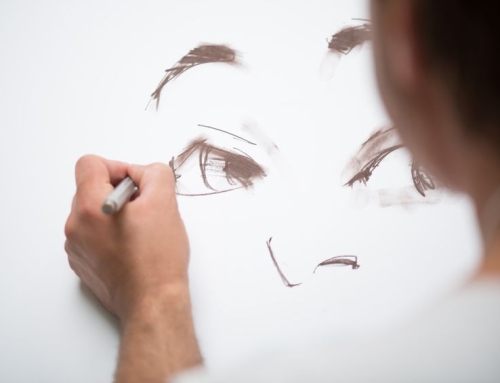Keep textures in your drawings distinct by utilizing different blending techniques for each.
In general, for smooth skin, lay down tone with graphite and blend with a chamois.
For hair, use charcoal and blend lightly with tortillons.
Clothing, though, varies so much from fabric to fabric that there are no hard rules or even rules of thumb to apply.
The key to drawing and blending clothing to your specifications is experimentation.
Because every drawing paper has a slightly different texture, there’s no getting around the need to experiment to get a clear idea of how different tools look on your specific paper.
Even extremely smooth papers have texture, however, and that texture can be used to your advantage when drawing woven fabrics such as that in suit coats.
Use charcoal for the darkest lines and shadow shapes and graphite for the body of the jacket.
Don’t use graphite in the darks unless a light touch with a very soft graphite pencil will suffice; once you press down hard, the tone turns silvery instead of getting darker.
As you lay down the mid-tone of the jacket with the graphite, allow some of the pencil strokes to show to render a more textured look which will contrast nicely with the smooth skin of the portrait.
Darken shadows with a charcoal pencil. When the midtones and shadows are placed, blend over the entire jacket with a piece of a paper.
You can experiment with tracing paper, computer paper, another piece of the drawing paper….anything you wish.
The paper will smear the tone without smoothing it much, so you’ll get a unique texture for the fabric that picks up a lot of texture from the drawing paper.
After blending, pick out lines with the kneaded eraser and sharpen edges of contrast with a sharp charcoal pencil.
Buttonholes, seams, stitches and other fine details are brought out as finishing touches on the fabric, though it’s wise to prepare for them before you begin laying down tone.
For example, you may wish to preserve whites for stitch lines or threads by using the indentation method, which requires clean paper.
If there are buttons or other man-made objects on the jacket, preserve them before you begin shading by tracing the shape onto frisket film and sticking it to the paper.
It will take longer, but the finished product will be polished and professional.
Learn how to draw portraits like a master with our latest portrait mastery drawing course.
It’s just like having your own drawing teacher guide you step-by-step along the way without the expensive price tag.
No more smudgy mess with black and white that looks like a first grader whipped up in art class.
“Portrait Mastery” is generously illustrated showing you step-by-step just how to create a real life portrait.


